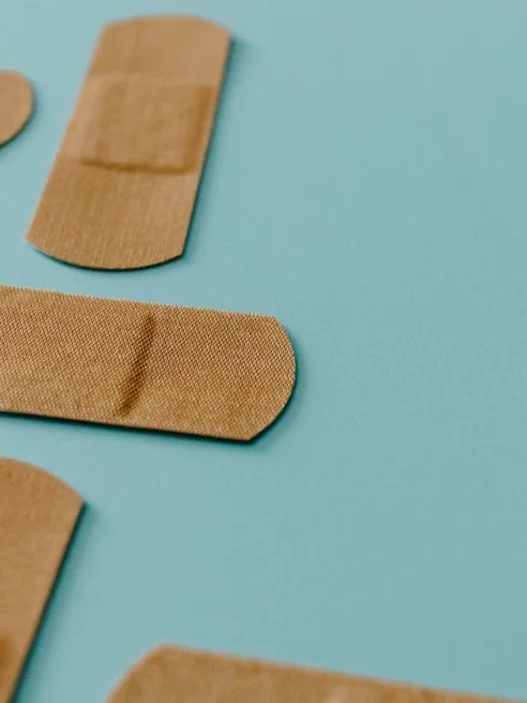In a procedure known as 091D070, surgeons create a new pathway from the right inner ear to the endolymphatic sac using the patient’s own tissue substitute, through an open approach. This allows for improved drainage and pressure regulation within the inner ear, potentially improving symptoms related to fluid buildup.
Table of Contents:
- 🔎 Clinical Indication
- 📋 Preparation
- 📖 Methodology
- 🩹 Recovery
- 🚨 Complexity & Risk
- 🔀 Similar Procedures
🔎 Clinical Indication
091D070, also known as Bypass Right Inner Ear to Endolymphatic with Autologous Tissue Substitute, Open Approach, may be performed to treat a patient with Meniere’s disease who has not responded to other treatment options. This surgical procedure aims to relieve symptoms such as vertigo and hearing loss by diverting excess fluid in the inner ear.
During the surgery, a small passage is created between the inner ear and the endolymphatic sac using the patient’s own tissue, typically muscle or connective tissue. This allows for improved drainage of fluid and pressure regulation within the inner ear, potentially reducing symptoms and improving the patient’s quality of life.
📋 Preparation
Before undergoing 091D070, also known as Bypass Right Inner Ear to Endolymphatic with Autologous Tissue Substitute, Open Approach, the patient must first be evaluated by the surgeon to determine the extent of the surgery needed. This evaluation includes a physical examination, medical history review, and possibly imaging tests such as CT scans or MRIs.
Once the evaluation is complete and the decision is made to proceed with the surgery, the patient will need to prepare for the procedure by following pre-operative instructions provided by the surgical team. This may include fasting for a certain period of time before the surgery, stopping certain medications that could interfere with the procedure, and arranging for transportation to and from the hospital or surgical center.
On the day of the surgery, the patient will be asked to arrive at the designated time and check in with the surgical staff. They will be taken to a pre-operative area where they will change into a hospital gown and have an IV line inserted for fluids and medications. The patient will then meet with the anesthesiologist to discuss anesthesia options and address any concerns before being taken to the operating room for the procedure.
📖 Methodology
During 091D070, a surgeon reroutes the flow of fluid from the right inner ear to the endolymphatic sac using tissue from the patient’s own body. This procedure is performed through an open approach, allowing for direct access to the inner ear structures.
By creating this bypass, the surgeon provides an alternative pathway for fluid to drain, relieving pressure and reducing symptoms associated with conditions like Meniere’s disease. The use of autologous tissue as a substitute minimizes the risk of rejection and promotes more successful integration within the patient’s body.
Overall, 091D070 aims to restore proper fluid balance within the inner ear, improving overall function and alleviating symptoms related to inner ear disorders. This surgical intervention can significantly improve the patient’s quality of life by reducing vertigo, hearing loss, and other debilitating symptoms.
🩹 Recovery
After undergoing Bypass Right Inner Ear to Endolymphatic with Autologous Tissue Substitute surgery, recovery typically involves a hospital stay of a few days for monitoring. Patients may experience some temporary discomfort at the surgical site and will be prescribed pain medication as needed.
During the recovery period, patients will be advised to avoid strenuous activities and to follow a specific diet to aid in healing. Follow-up appointments with the surgeon will be scheduled to monitor progress and discuss any potential complications. Physical therapy may be recommended to help regain balance and coordination after the procedure.
🚨 Complexity & Risk
Performing the 091D070 procedure involves bypassing the right inner ear to the endolymphatic sac using autologous tissue substitute through an open approach. This complex surgery requires precise skill and attention to detail to ensure the desired outcome.
However, there are potential risks associated with this procedure, including damage to surrounding structures, infection, and hearing loss. Patients undergoing this surgery should be aware of these risks and discuss them thoroughly with their healthcare provider before making a decision.
🔀 Similar Procedures
Another medical procedure similar to bypassing the right inner ear to the endolymphatic with autologous tissue substitute is a partial cochlear implant. This procedure involves inserting electrodes into the cochlea to help improve hearing for patients with severe hearing loss or deafness. Both procedures aim to improve hearing function through surgical intervention.





